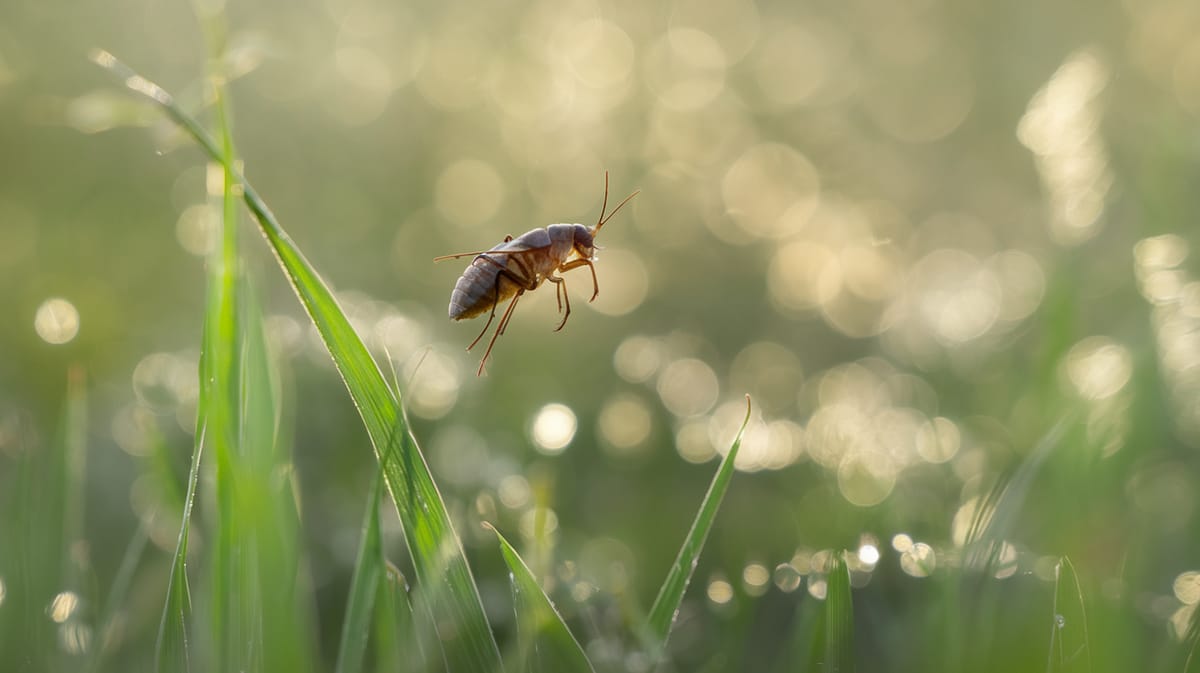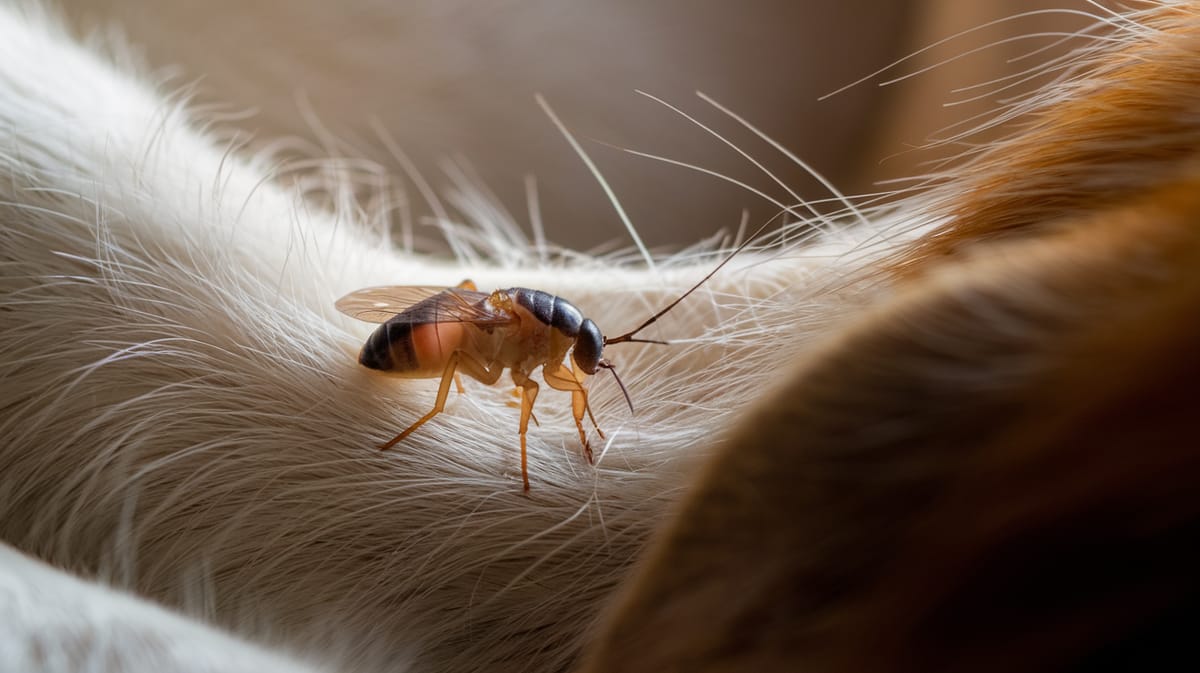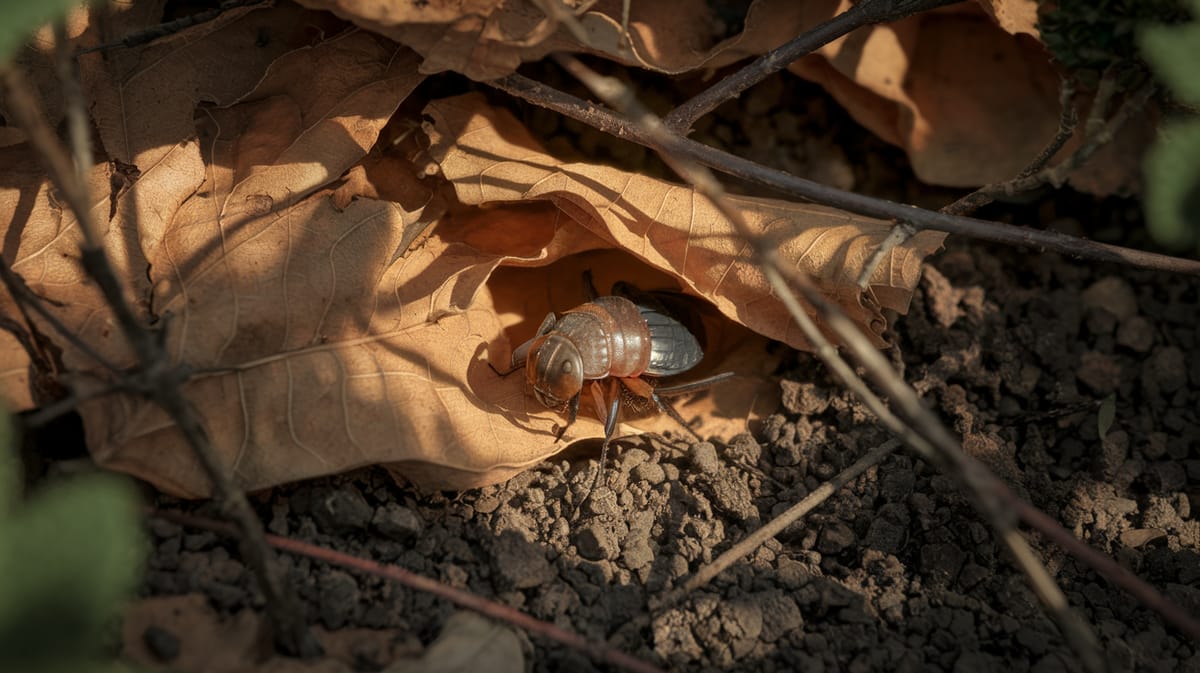Flea
Tiny acrobats of the animal kingdom, fleas leap vast distances despite their minuscule size. These tiny parasites play a role in controlling animal populations through disease transmission.

Key Insights at a Glance
Did You Know?
Taxonomy & Classification
Fleas are expert jumpers with specialized mouthparts for feeding on hosts, reflecting adaptations for parasitic lifestyles and survival in diverse conditions. Let's understand the evolutionary journey and classification of these remarkable parasites.
Global Reach
Fleas consist of over 2,500 species spread across the globe, showcasing adaptability to various climates and host species.
Resilient Evolution
Originating over 100 million years ago, fleas have evolved unique traits to endure through significant climatic and ecological shifts.
Lifecycle and Growth
A remarkable journey of transformation from Egg to Adult.
Egg
Flea eggs are tiny, white, and laid in the host's environment, often falling off into carpets or bedding.
Larva
Larvae are blind, worm-like creatures that feed on organic debris, including adult flea feces, to sustain growth.
Pupa
The pupal stage is a cocooned phase where transformation occurs, triggered by vibrations indicating a nearby host.
Adult
Adult fleas emerge ready to jump and feed on blood, quickly seeking hosts for survival and reproduction.
Dietary Habits
A parasitic feeder with specialized mouthparts, this insect relies on blood meals from mammals and birds for survival.
| DIET TYPE | DESCRIPTION |
|---|---|
| Primary Diet | Primarily feeds on the blood of mammals, including dogs, cats, and humans, using specialized mouthparts. |
| Secondary Diet | Occasionally turns to birds as a blood source, especially when mammalian hosts are scarce or inaccessible. |
| Occasional | In rare circumstances, feeds on reptiles, showcasing adaptability in host selection under limited conditions. |

Behaviour and Adaptations
Discover the fascinating traits that make the flea a master of survival and adaptation.
Jumping Agility
Fleas can leap distances over 100 times their body length.
Blood Feeder
Specialized mouthparts allow efficient blood extraction from hosts.
Resilience
Tough exoskeletons protect fleas from environmental hazards.
Ecosystem Impact
Fleas play a significant role in maintaining ecological balance through various contributions.
Nutrient Recycling
Fleas contribute to nutrient cycling by decomposing organic matter through their waste.
Food Web Support
Fleas serve as an essential food source for birds and small mammals.
Parasitic Control
Fleas help control host populations by regulating the health of their animal hosts.
Conservation Challenges
Addressing key threats to flea populations and their ecological impact.
Chemical Exposure
Pesticides disrupt flea life cycles and reduce populations.
Habitat Loss
Urbanization and agriculture limit flea habitats and hosts.
Climate Change
Temperature shifts affect flea reproduction and survival.
Frequently Asked Questions
How long do Flea live?
Fleas typically live for about two to three months. Under optimal conditions, they can survive for several months by feeding regularly on a host. Their lifecycle includes egg, larva, pupa, and adult stages, with adults living the longest.
What do Flea eat?
Fleas primarily feed on the blood of mammals and birds. Adult fleas require a blood meal to reproduce. They are known for infesting pets like dogs and cats, but they can also feed on humans and other animals.
Are Flea poisonous?
Fleas are not poisonous, but their bites can cause irritation, allergic reactions, and, in some cases, transmit diseases such as the plague and typhus. It is important to manage flea infestations to prevent these potential health risks.
Are Flea endangered?
Fleas are not considered endangered. They are widespread and thrive in various environments, especially those with abundant hosts. Their adaptability and reproductive capacity ensure they remain a common pest across the globe.
What do Flea symbolize?
Fleas often symbolize persistence, irritation, or small but nagging problems. In literature and folklore, they sometimes represent the annoyance and discomfort caused by minor nuisances. Cultural interpretations can vary widely.
Do Flea bite?
Yes, fleas bite. They pierce the skin of their host to feed on blood. Flea bites can cause itching, redness, and irritation. Some individuals and animals may experience allergic reactions leading to more severe symptoms.
What color are Flea?
Fleas are typically reddish-brown to dark brown. Their color helps them blend into the fur or feathers of their hosts, providing camouflage while they feed and reproduce.
Does a Flea have wings?
No, fleas do not have wings. They are wingless insects adapted for jumping. Their powerful hind legs allow them to leap great distances relative to their size, making it easier for them to move between hosts.
What does a Flea look like?
Fleas are small, about 1.5 to 3.3 mm long, with flattened bodies that allow them to move through fur and feathers. They have long hind legs for jumping and mouthparts adapted for piercing skin and sucking blood.
Is a Flea an insect?
Yes, a flea is an insect. It belongs to the order Siphonaptera and is characterized by its wingless, flattened body and jumping ability. Like other insects, fleas have a three-part body: head, thorax, and abdomen.
Related Insects
Discover insects with similar characteristics to Flea - including shared habitats, diets, and taxonomic classifications
Share this profile
Help others discover Flea
